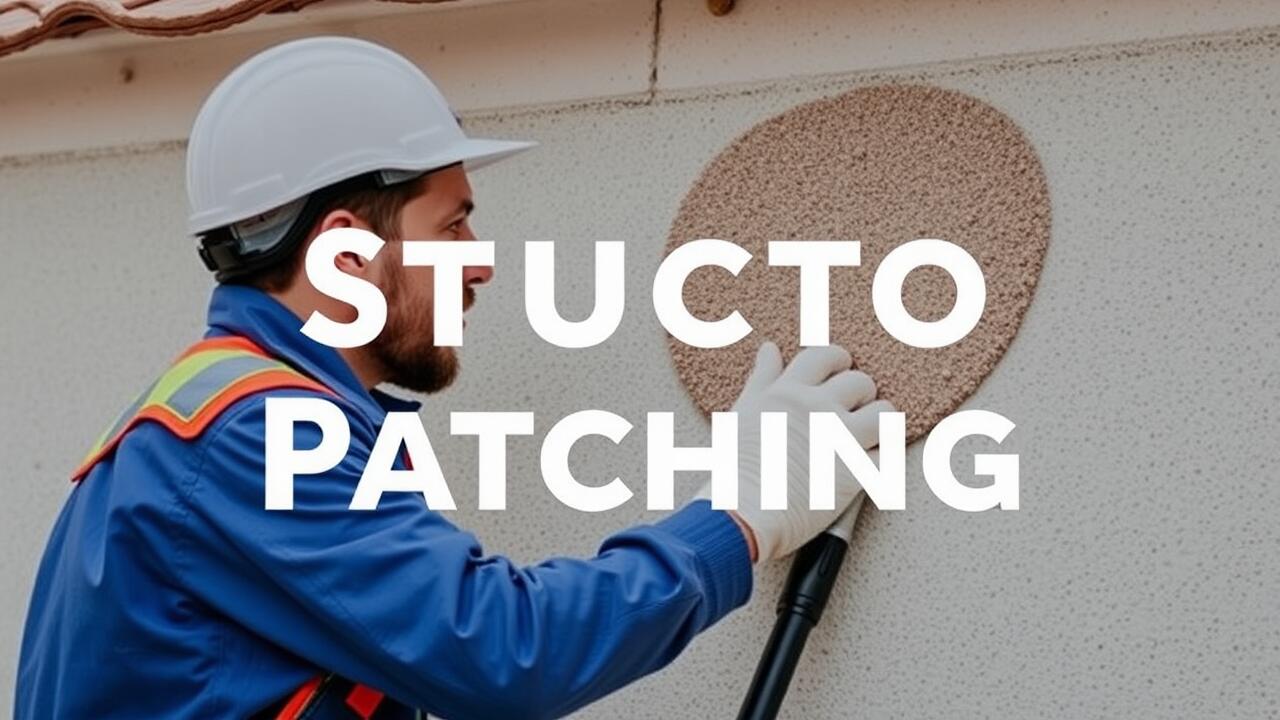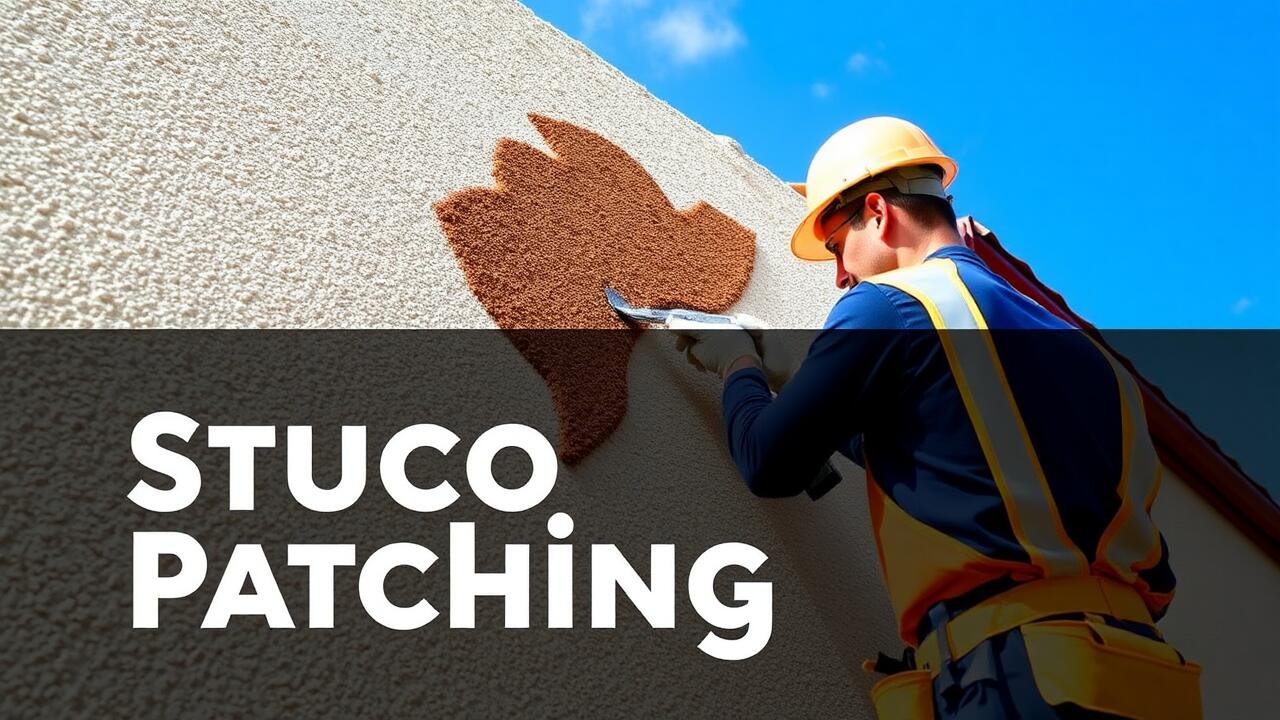
Routine Maintenance for Stucco
Regular maintenance is essential for preserving the integrity of stucco surfaces. Homeowners should inspect their exteriors periodically, especially after severe weather events. Look for signs of wear, such as discoloration, cracks, or areas where the stucco appears to be separating from the underlying structure. Timely identification of these issues allows for prompt repairs, which can prevent more extensive damage from occurring.
In addition to visual inspections, it is important to clean stucco surfaces to remove dirt and debris. Using a soft brush or power washer on a low setting can help avoid damaging the material. If minor repairs are needed, many people search for “Stucco Patching near me” to find local solutions. Addressing issues as they arise maintains the aesthetic appeal of the home and prolongs the life of the stucco.
Best Practices for Inspection
Regular inspection of stucco surfaces is vital for early detection of potential issues. Start by examining the exterior after severe weather events, as high winds or heavy rain can contribute to cracks and damage. Look for any visible deterioration such as fading or peeling paint, which may indicate moisture problems beneath the surface. Pay close attention to corners and transitions where stucco meets other materials, as these areas are often prone to movement and cracking.
In addition to visual checks, consider utilizing tools to enhance your inspection efforts. A moisture meter can help identify areas of excess dampness that might not be visible to the naked eye. If you notice any signs of significant cracking or water intrusion during your inspections, seek out "Stucco Patching near me" to find local professionals who can provide timely repairs. Establishing a routine schedule for inspection will help maintain the integrity of your stucco and ultimately extend its lifespan.
Repairing Minor Cracks
Minor cracks in stucco can often be repaired without professional assistance. The first step is to clean the area around the crack, removing any loose debris or dust. This ensures the repair material adheres properly. Using a premixed stucco patching compound or a simple mixture of Portland cement and sand can effectively fill these gaps. Apply the compound with a putty knife, pressing it firmly into the crack and smoothing it out to match the surrounding surface. A damp sponge can help feather the edges for a seamless finish.
For those uncomfortable with DIY methods or simply seeking convenience, searching for "Stucco Patching near me" can connect you with local specialists. These professionals can often assess the damage and recommend appropriate materials for a lasting repair. Even minor cracks can worsen over time if not addressed, so taking action early can prevent greater issues down the line. Regularly check for any signs of distress in your stucco to maintain the health and appearance of your exterior.
DIY Methods and Materials
For homeowners looking to tackle minor stucco cracks on their own, a few simple DIY methods can be both effective and economical. Start by cleaning the damaged area thoroughly to remove any dirt or debris. Using a putty knife, apply a premixed stucco patch compound to the crack, ensuring it fills the void completely. Smooth the surface with the knife for a seamless finish. Once dry, the area can be painted to match the surrounding stucco, restoring the appearance of the wall.
When considering materials, a premixed stucco patch is highly recommended due to its ease of use and compatibility with existing stucco. Some homeowners search for "Stucco Patching near me" to find local suppliers offering suitable products. Additionally, using a bonding agent can help the new patch adhere better to the old material, which is critical for long-lasting repairs. Keep in mind that while these methods work for small cracks, larger problems may require professional attention.
Professional Help for Major Issues
When cracks in stucco extend beyond minor surface issues, they can indicate underlying structural problems that require professional attention. Active moisture infiltration may result from larger cracks, leading to further damage and inviting harmful pests. Homeowners should be aware of the signs that suggest a more serious issue, such as cracks wider than a quarter-inch, horizontal or diagonal cracks, or cracks that change over time. These indicators can help determine whether it’s time to seek expert assistance.
Finding the right professional for stucco repairs is crucial. Searching for “Stucco Patching near me” can connect homeowners with experienced contractors who specialize in stucco repair. These professionals can provide a thorough inspection and recommend appropriate solutions tailored to the specific situation. Engaging an expert helps ensure that repairs are executed correctly, preserving the integrity of the home while preventing additional costs down the line.
Knowing When to Call a Contractor
When cracks in stucco begin to widen or change shape, it may indicate underlying structural issues that require professional attention. Homeowners should take note of cracks that exceed a quarter of an inch in width or that penetrate through the entire stucco layer. Signs of water infiltration, such as mold or peeling paint, can also further highlight potential problems. In these cases, seeking a qualified contractor becomes essential for not only assessing the extent of the damage but also ensuring proper repair techniques are employed.
Finding skilled professionals with experience in stucco repairs is important. Searching for “Stucco Patching near me” can help pinpoint local experts who can evaluate the situation effectively. They can provide a comprehensive inspection to identify any hidden issues, and guide homeowners through necessary repairs. It’s crucial to address concerns early to prevent more extensive damage and higher repair costs down the line.
FAQS
What are common signs that stucco cracks need urgent attention?
Signs that stucco cracks need urgent attention include cracks wider than 1/8 inch, cracks that run vertically or diagonally, water stains, or signs of moisture damage inside your home.
How often should I inspect my stucco for cracks?
It is recommended to inspect your stucco at least once a year and after severe weather events, such as heavy rain or strong winds, to catch any potential issues early.
Can minor cracks in stucco be repaired on my own?
Yes, minor cracks in stucco can often be repaired using DIY methods and materials, such as stucco patching compound or caulk, as long as they are not indicative of a larger structural problem.
What are the risks of ignoring stucco cracks?
Ignoring stucco cracks can lead to more significant problems, including water intrusion, mold growth, and structural damage, which can be more costly to repair in the long run.
When is it necessary to hire a professional for stucco repairs?
It is necessary to hire a professional if the cracks are extensive, if you notice signs of water damage or structural issues, or if you are unsure about the severity of the problem. A qualified contractor can provide a thorough assessment and recommend appropriate solutions.


